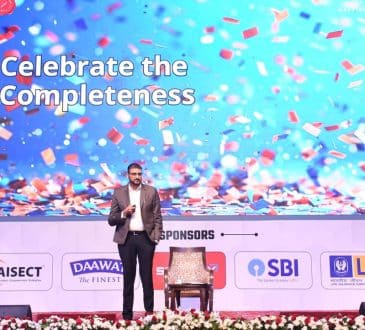4 Ways to Become a More Confident, Data-Driven Leader

There’s a plethora of data at our fingertips, but it can be challenging to use it effectively. Leaders must shift their mindsets to build more confidence in making data-driven decisions — and encourage their teams to do the same. In doing so, they will be empowered to harness the full potential of their data and drive their organizations forward.
In 2023, data is abundant and easily accessible. So, why don’t we use it enough?
The answer is somewhat complex and deserves an explanation. A study by HFS and Syniti found that 65% of executives surveyed had fully implemented data modernization (i.e., moved data from legacy databases to cloud-based databases that can store all kinds of data). Yet, 20% said they didn’t have trust in the data at their fingertips. The problem, they revealed, was a lack of security in the accuracy of their data and data management. In other words, they weren’t data-averse — they were just unsure of the data they were receiving and how to best use it.
This reluctance makes sense, especially for leaders in organizations that haven’t put strategies in place to drive data confidence. It’s very difficult to green-light a project or agree to a new marketing direction if you’re not sure the data you’re using has merit. However, it’s not wise to overlook data as a rich source of insights — even if you’re not 100% sure that all the insights are precise.
To become more comfortable leveraging data, follow these tips:
- Embrace a data-first mindset.
Rather than think of data as yet another piece of the puzzle, see it as a first step toward making better choices. For example, when an issue arises, collect as much data as you can at the onset. Before doing anything, know what the data says. By making data central to your decisions, you make your own experience and intuition more credible. After all, if acquired in a scientific way, data is objective and can reliably serve as a foundational decision-making building block.Remember that data doesn’t always mean charts and graphs, either. Data can be composed of any useful information that can’t be argued with. In his article about great decision-making, Martin G. Moore, the founder of Your CEO Mentor, illustrates how getting information upfront can help you make better decisions faster. “Often, when faced with a difficult problem, we focus on identifying the symptoms, not the core issue that caused the problem … Although you may need to urgently address the symptoms, once this is done, you should always develop a plan to fix the root cause.” Data allows you to spot the core issue more rapidly so you can move forward.
- Invest in data literacy and skill development.
Does your workforce have high data literacy and competence? If not, your business could fall far behind the competition. According to a study by Tableau, 70% of workers will be expected to use data in their jobs by 2025. However, you can’t expect everyone who works for you to develop their data literacy and related skills by themselves. Ideally, you should invest as much in tools to collect, archive, and analyze data as you do in professional development programs that enable your employees to use data more regularly. Many individuals — including talented employees with degrees and credentials — can become intimidated by spreadsheets, charts, and datasets. They don’t always know how to make meaning out of the data, so they aren’t able to use it as an asset when they have to make decisions. Your willingness to help them become more data-savvy through training, workshops, programs, and one-on-one mentoring will fuel greater data literacy across your team. - Foster a culture of experimentation and learning.
Data-driven cultures are often big on experimentation. Leaders push their team members to embrace calculated risks and promote constant learning. Because they’re not expecting perfection, their direct reports feel free to try new approaches. Each time they do, they can collect data to inform their future innovations.Michael Nichols, the executive vice president of enterprise products and solutions at R&K Solutions, says this type of consistent learning through data takes away hesitance and resistance to data. He cautions that leaders need to take an educational, trusting role regarding data to temper employee skepticism toward the importance of data. “Make sure to communicate the benefits of a data-driven approach and how it helps the organization meet its mission,” he advises. “[Employees] need to be educated on the value of the data to be less resistant. Don’t modify the data to paint the picture you want to paint. Use the data to make informed decisions.”
- Communicate data insights effectively.
People who don’t work with data every day can become overwhelmed when they have to work with too much information at once. The workaround for this dilemma is to find ways to visualize your data. For example, you might turn a dataset into an infographic or chart. Taking this step gives the data more context and eliminates confusion.If you’re unsure how to visualize the data in your control and use it effectively, consider purchasing software aimed at producing charts, maps, histograms, and tables. Salesforce and Plotly are just a few of the countless other programs, platforms, and tools on the market. But a word of advice: Before you buy something new, make sure that none of your systems already has data visualization capabilities.
When you make decisions without data, you do yourself and all stakeholders a disservice. The next time you’re faced with a challenge, resist presenting a fix until you have all the facts. You’ll feel better about your final decision and be able to support it, thanks to your data.
Have you read?
Ranked: These Are The Best War Movies of All Times And Why.
Unveiling Extraordinary Immigrant Achievers: The Impact of Naturalized Citizens.
Imperial Echoes: 22 Leaders, and their Lessons, and Legacies.
Rebranding Countries: 17 Names That Redefined The Nation’s Identity.
These Are The Largest Warships In The World.
Bring the best of the CEOWORLD magazine's global journalism to audiences in the United States and around the world. - Add CEOWORLD magazine to your Google News feed.
Follow CEOWORLD magazine headlines on: Google News, LinkedIn, Twitter, and Facebook.
Copyright 2025 The CEOWORLD magazine. All rights reserved. This material (and any extract from it) must not be copied, redistributed or placed on any website, without CEOWORLD magazine' prior written consent. For media queries, please contact: info@ceoworld.biz








